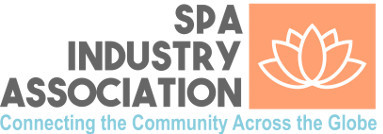
Managing stress has become essential in today’s fast-paced world, especially for busy professionals juggling numerous responsibilities. Long work hours, deadlines, and constant multitasking can lead to burnout if stress management strategies are not in place. Mindfulness-Based Stress Reduction (MBSR) offers a solution.
Developed by Dr. Jon Kabat-Zinn, MBSR is an evidence-based program that combines mindfulness techniques to help people reduce stress, stay focused, and maintain balance. This article explores effective MBSR techniques that professionals can incorporate into their daily lives for stress relief.
Understanding MBSR and Its Relevance for Professionals
MBSR training is a structured program designed to enhance mindfulness and resilience. The program typically spans eight weeks and includes practices such as meditation, body scans, and mindful movement. While attending an MBSR program may be ideal, professionals can integrate some of these techniques on their own, making them a valuable resource for managing workplace stress.
MBSR techniques help professionals respond thoughtfully rather than react impulsively to stressful situations, fostering a sense of calm and improving productivity.
1. The Mindful Pause: A Quick Reset in Moments of Stress
The “Mindful Pause” is a simple yet powerful technique for quickly grounding oneself during high-stress moments. This technique can be done anywhere and only requires a minute or two.
How to Practice:
- Take a deep breath, inhaling through your nose and exhaling through your mouth.
- Notice how your body feels at this moment. Feel your feet on the ground, your hands resting on a surface, or the weight of your body in the chair.
- Observe any physical sensations, thoughts, or emotions, allowing them to be as they are without judgment.
- After a few moments, take another deep breath and return to your tasks with a refreshed mind.
Benefits for Professionals: This brief pause helps professionals reset during stressful moments, providing a fresh perspective and a calmer approach to decision-making.
2. Mindful Breathing: Centring the Mind in Just Five Minutes
Mindful breathing is one of the core techniques of MBSR, helping individuals centre their attention on the breath to create a sense of calm. It’s ideal for busy professionals who can take short breaks throughout the day.
How to Practice:
- Sit in a comfortable position with a straight back and close your eyes if you’re comfortable doing so.
- Take a deep breath in through the nose, noticing the sensation as the air fills your lungs.
- Slowly exhale through the mouth, feeling the release of tension.
- Focus on each breath, observing the rhythm without trying to change it.
- If your mind wanders, gently bring it back to the breath.
Benefits for Professionals: Mindful breathing helps reduce stress hormones and brings clarity, making it easier to manage intense workloads and stay focused throughout the day.
3. Body Scan Meditation: Releasing Tension and Reconnecting with the Body
The body scan is an MBSR practice that involves mentally scanning each part of the body, noticing any tension or discomfort without trying to change it. This technique is excellent for professionals who spend long hours sitting or experience muscle tension due to stress.
How to Practice:
- Sit or lie down in a comfortable position, closing your eyes.
- Start at the top of your head, bringing your attention to your scalp, forehead, and face.
- Gradually work down through your neck, shoulders, arms, torso, legs, and feet, spending a few moments noticing sensations in each area.
- Acknowledge any tension without judgment, then gently release it with each breath.
Benefits for Professionals: Body scans help relieve physical tension and increase body awareness, especially valuable for professionals who may neglect physical well-being due to work demands.
4. The STOP Technique: A Simple Way to Manage Overwhelming Moments
The STOP technique is a quick MBSR practice designed to bring immediate relief in moments of overwhelm. This technique is easy to remember and can be practiced multiple times a day.
How to Practice:
- S: Stop whatever you’re doing.
- T: Take a deep breath and focus on your breathing for a few seconds.
- O: Observe your thoughts, emotions, and physical sensations.
- P: Proceed with your day, feeling more grounded and mindful.
Benefits for Professionals: The STOP technique offers a quick mental reset, allowing professionals to process challenging emotions and approach problems with greater calmness and clarity.
5. Mindful Listening: Enhancing Focus and Connection in Meetings
Mindful listening is an MBSR technique that encourages focusing fully on the speaker without forming responses or judgments in advance. In today’s workplace, where distractions abound, mindful listening can improve interpersonal communication and reduce misunderstandings.
How to Practice:
- During conversations or meetings, bring your full attention to the speaker, putting aside other thoughts.
- Notice their words, tone, and body language without forming a response until they’ve finished speaking.
- When it’s your turn, respond thoughtfully and acknowledge what they’ve said.
Benefits for Professionals: Mindful listening fosters better communication, reducing stress and improving collaboration in professional settings.
6. Walking Meditation: Bringing Mindfulness into Movement
Walking meditation combines mindfulness with gentle movement, offering professionals a way to destress while taking a break. This practice can be especially beneficial for those with limited time for exercise.
How to Practice:
- Find a quiet space, like a hallway or outdoor area, and begin walking at a natural pace.
- Focus on the sensation of your feet touching the ground, the rhythm of your steps, and the feeling of your body in motion.
- Allow yourself to be fully present with each step, noticing the sights, sounds, and smells around you.
Benefits for Professionals: Walking meditation breaks up the workday, relieving tension while encouraging physical activity. It’s a great way to recharge during lunch breaks or between meetings.
7. Mindful Eating: Taking a Break from Multitasking
For busy professionals, lunch often becomes a task to complete while working. Mindful eating encourages savouring food without distraction, turning mealtime into a mini-meditation.
How to Practice:
- Set aside any distractions like phones, computers, or paperwork during meals.
- Take small bites, chewing slowly and noticing the taste, texture, and aroma of each bite.
- Focus solely on eating, paying attention to how each bite nourishes your body.
Benefits for Professionals: Mindful eating reduces digestive stress, increases enjoyment of meals, and provides a natural pause during the day. It also prevents overeating, as you’ll be more aware of your body’s hunger and fullness cues.
8. Journaling for Reflection and Stress Relief
Journaling is a mindfulness technique that involves recording thoughts, emotions, and experiences. Writing can help busy professionals process stress and gain clarity on challenging situations.
How to Practice:
- Set aside a few minutes at the end of the day to write about your experiences, focusing on moments of stress and how you responded.
- Reflect on positive experiences and things you’re grateful for.
- Avoid judging or editing your thoughts—allow them to flow naturally onto the page.
Benefits for Professionals: Journaling provides a release for pent-up emotions and offers insight into stress triggers, helping professionals approach future challenges with greater awareness.
9. Cultivating Gratitude: Reframing Stressful Situations
Practicing gratitude is a mindful approach to appreciating positive aspects of life, even in stressful situations. By focusing on what’s going well, professionals can reframe stress and build resilience.
How to Practice:
- Take a moment each day to reflect on three things you’re grateful for, whether they’re personal achievements, supportive colleagues, or a peaceful moment.
- Write these down or simply hold them in your mind, allowing yourself to feel genuine appreciation.
Benefits for Professionals: Cultivating gratitude shifts focus away from stressors, enhancing mood and building a positive mindset.
10. Evening Reflection: Letting Go of the Day’s Stress
The Evening Reflection is a short practice to help busy professionals transition from work mode to relaxation. Reflecting on the day’s events allows the mind to unwind, promoting better sleep.
How to Practice:
- Find a quiet moment at the end of the day, sitting comfortably with your eyes closed.
- Reflect on the day, acknowledging any stressful events without judgment.
- Let go of unresolved issues, knowing they can be addressed later, and visualize transitioning into a state of rest.
Benefits for Professionals: This practice helps individuals separate work stress from personal time, promoting a healthy work-life balance and improving relaxation.
Final Thoughts
For busy professionals, managing stress is crucial to maintaining productivity and well-being. MBSR techniques offer effective and practical tools for staying calm, focused, and resilient amid the pressures of the workplace.
By incorporating techniques like mindful breathing, the STOP method, and mindful listening, professionals can create small moments of mindfulness throughout their day, reducing stress and enhancing overall quality of life. With consistent practice, these MBSR techniques provide a pathway to achieving not only workplace success but also greater personal fulfilment.
–



